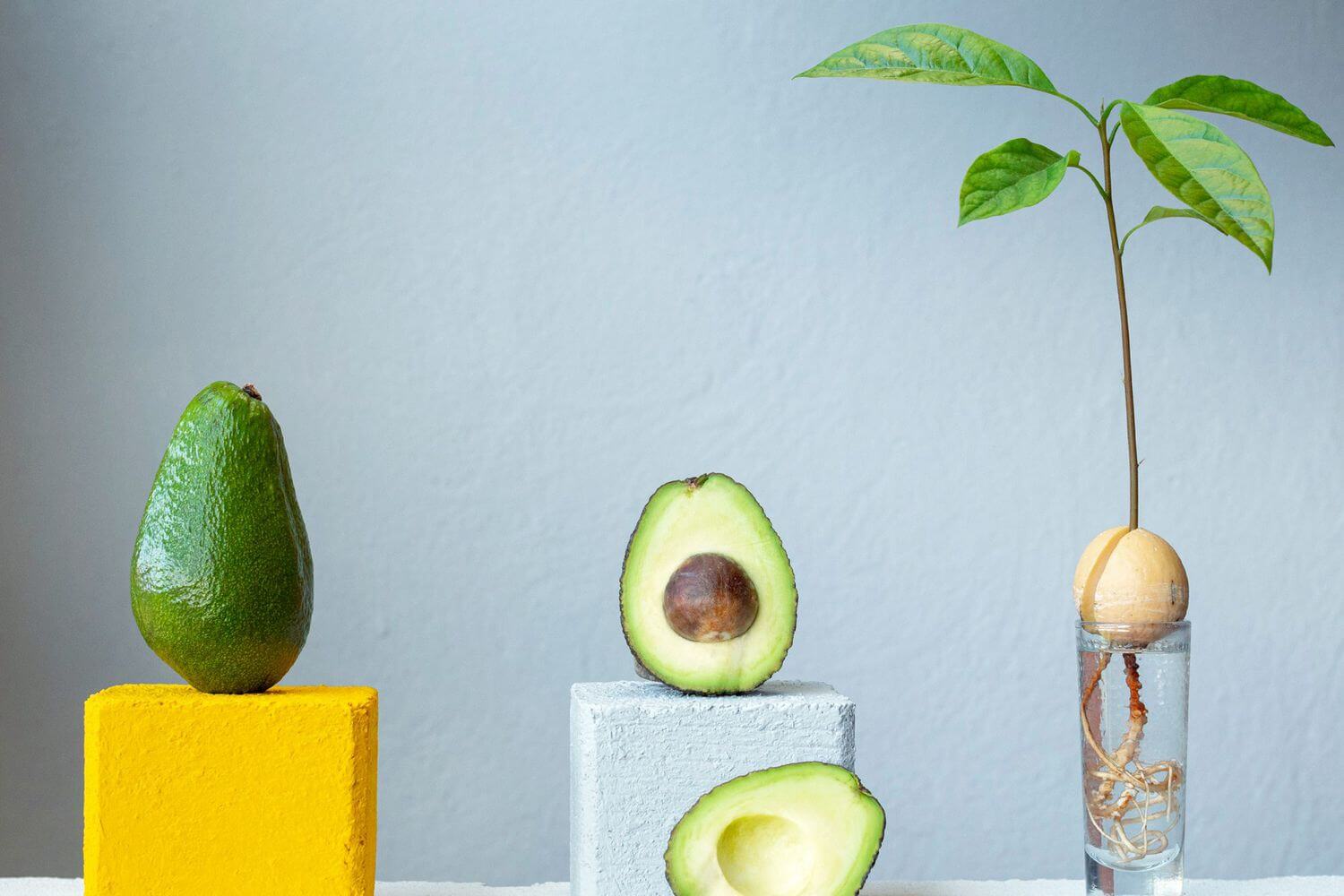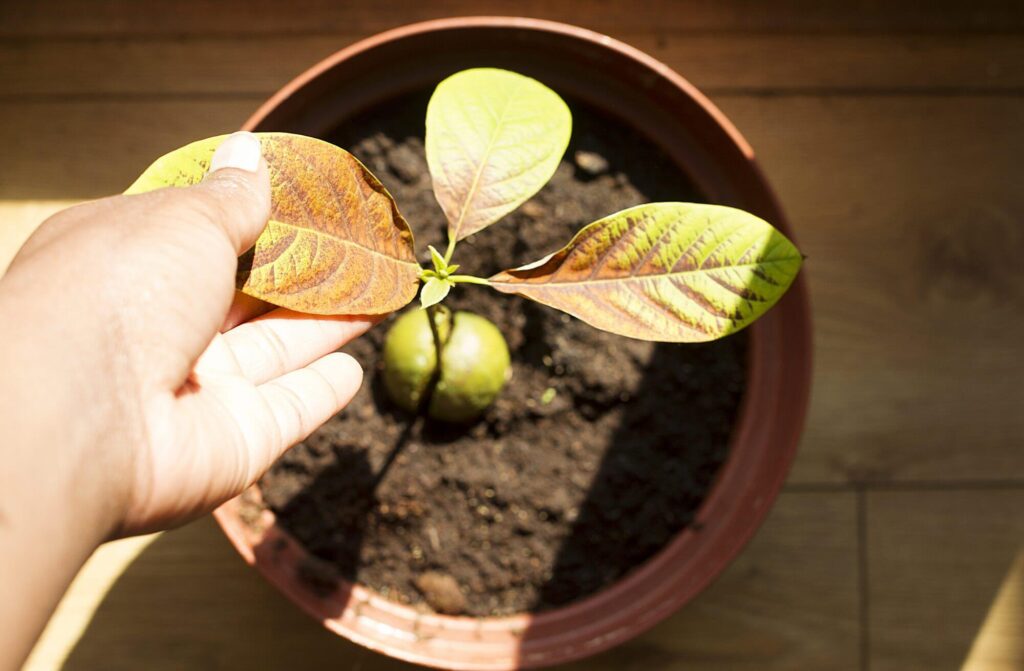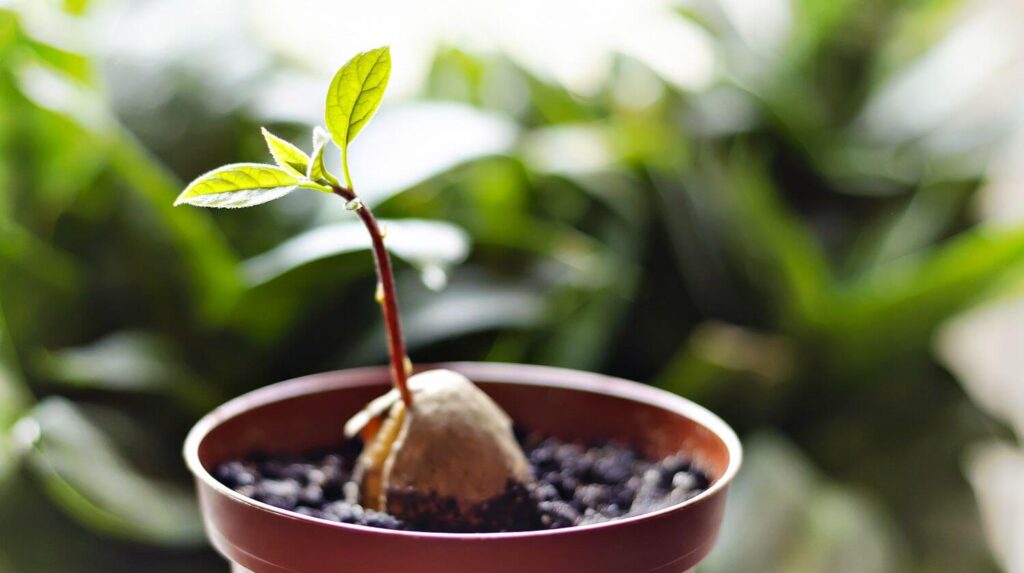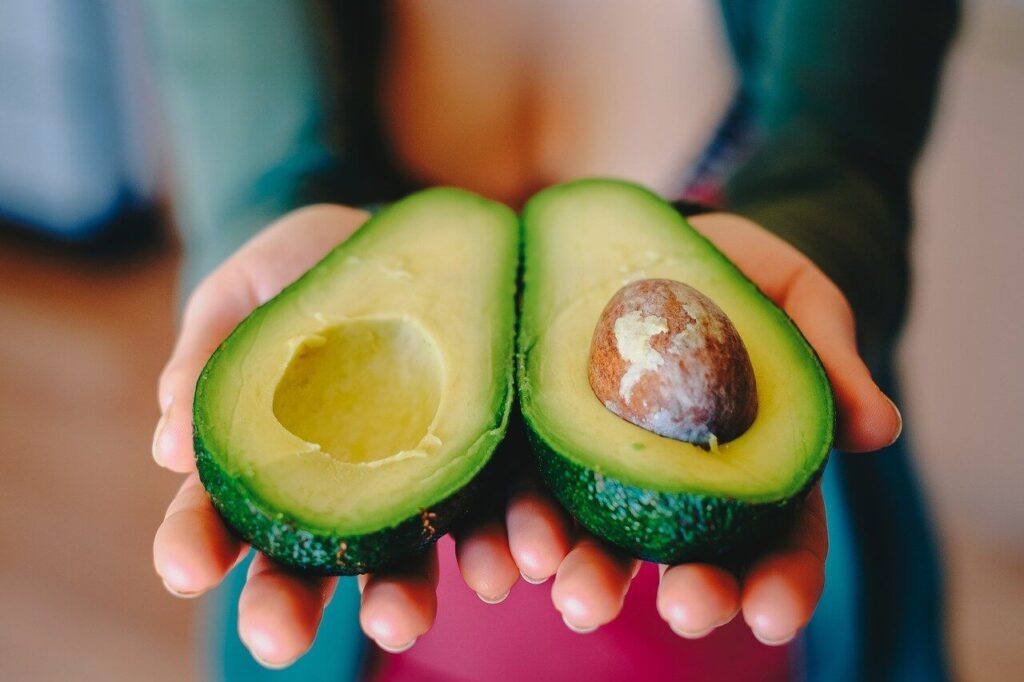
There is no doubt that avocados are one of the most delicious summer fruits. It’s hard to think of a summertime appetizer that is more wholesome and delicious than a zesty lime guacamole dip served with tortilla chips. Whenever you’re making guacamole or slicing avocados for salads, save the pits from growing avocado trees.
Grow your own avocado plant from seed for a great educational project at home or in the classroom. We’ve got a handy guide below with pictures to show you how to grow an avocado seed indoors.
Tips on How to Grow Avocado at Home
Remove the pit and clean it
The first step in cleaning an avocado is to remove the pit (without cutting it) and then wash it (often it makes sense to soak the pit in some water for a few minutes, then scrub the remaining fruit off). It is important not to remove the brown skin surrounding the seeds of the pit.

Pick out the “up” and “down” ends.
While some avocado pits are slightly oblong, others are shaped like perfect spheres – but all avocado pits have a ‘bottom’ (where roots will grow) and a ‘top’ (where sprouts will grow). Those at the top are a little more pointed, and those at the bottom are a little flatter.
To grow an avocado from the pit, you must place the bottom root end in water, so you should always determine which end is the top and which is the bottom before piercing it with a toothpick.
Pierce with three toothpicks
The toothpicks should be inserted at a slight downward angle into the avocado seed, evenly spaced around the circumference. You will use these toothpicks as avocado scaffolding to rest the bottom half in water, so make sure they are wedged firmly in place.
You should stick them in at a slight angle (pointing down) so that more of the avocado base rests in the water when set over a glass of water. You can now purchase growing kits that make it easier to balance your avocado seed, as well as stylish glass and jar toppers to make this process easier.
Submerge the seed halfway in the water
Put it on a quiet windowsill with plenty of sunlight. When roots begin to grow, and the water needs to be changed, you can easily see when it is time to change it using clear glass. Several guides recommend changing the water every day, but through trial and error, I found that every five days to a week is better.
Maintain a regular water change to avoid mold, bacteria, and fungus growth, which can be fatal to avocado sprouts.
Wait for your avocado seed to spring
The following is the process you will witness:
- Drying out of the avocado pit will cause it to crack, and the outer brown seed skin will peel off.
- A tiny taproot will emerge from the bottom crack of the avocado pit as a result of cracks that extend all the way to the bottom.
- In time, a small sprout will appear through the avocado pit’s top as the taproot grows (and branches).
- Taproots must NEVER be allowed to dry out unsubmerged – doing so will result in their death.

When the tree is about 15 cm tall, plant it in the soil
You can encourage new growth by cutting the stem back to about 8cm when it is about 15cm long. When it reaches 15 cm again, place it in a 25 cm diameter pot filled with humus soil, leaving the top half exposed.
A sunny windowsill is the best place to place it. Avocados love the sun – the more sun, the better.
Water and watch it grow
Frequent waterings with occasional deep soaks are recommended. Moisture should always be present in the soil, but it should not be saturated.
The yellowing of the leaves is an indication that the plant has been over-watered; let it dry out for a few days.
Pinch out top leaves to encourage bushiness
The top two sets of leaves should be pinched off when the stem reaches 12 inches high. It will encourage the plant to grow side shoots and more leaves, which will make it bushy.
The two newest sets of leaves on top of the plant should be pinched out every time the plant grows another 6 inches.
How to Care for an Avocado Tree
Troubleshooting bugs
As the avocado trees grow, aphids tend to collect – the critters love the delicious avocado leaves. Here’s how to get rid of them: Spray your plant down with a hose outside or in the sink/shower to remove all of the aphids.
After the little pests have been removed, spray your plant with water and a dash of dishwashing liquid, plus a teaspoon of neem oil. It will prevent aphids from returning. Regularly check your plant and re-clean, as well as a spray if necessary.
Wintering
The baby avocado trees can thrive outdoors in summer, but they must be brought indoors before the temperatures fall in the fall/winter if they live somewhere with a cooler average temperature of 24 degrees Celsius.
How to Care for an Avocado Tree

Tip: 1 – Light
The pot should be placed in a sunny window inside or moved outside when the temperature reaches 45 degrees. As you establish your avocado trees in pots, it is best to keep them in partial shade. If they are exposed to too much direct sunlight for too long, the leaves will get sunburned.
Tip: 2 – Temperature and humidity
The plants can be planted outside if you live in a warm enough hardiness zone. When the temperature is between 60°F and 85°F and the humidity is medium or high, avocados are at their best.
Tip: 3 – Fertilizer
Weekly fertilization with a nitrogen fertilizer, indicated by a higher first number, such as 7-4-2, should be done in the summer. Besides zinc, avocados need a small amount of copper, so search for a fertilizer that contains this mineral. Fertilizing during the winter when growth is minimal is not recommended.
Tip: 4- Pruning
Ensure that the tree is pruned regularly. The top two sets of leaves should be cut back every time the plant grows another 6 inches tall. In six inches, cut back the plant when it has grown to 12 inches. It should be cut back every 18 inches after reaching 18 inches, and so on. This encourages bushier growth.
Tip: 5 – Repotting avocado
When growing avocado trees in containers, remove them as they grow and place them in successively larger pots, increasing the diameter by 2 inches each time.
Conclusion
Caterpillars, mites, thrips, borers, and other beasties can damage avocado trees when they are grown outdoors, but they can all be handled by the observant grower. An avocado tree pest identification and treatment guide is available from the “University of California Integrated Pest Management“.
Frequently Asked Questions
How big does an avocado tree get?
The height of mature avocado trees planted outside usually ranges from 15 to 35 feet. Containers may not be able to accommodate them in the future as they grow. It may be too difficult to grow such a large tree indoors or move it indoors and outside.
How soon will I have avocados?
Expect to wait about 13 years for the avocado fruit if you start with the pit in a glass of water. The good news is that you could be eating your own avocados in four years if you start with a healthy, nursery-grown plant. You’ll need to wait several days for the flesh of avocados to soften after picking them when they reach a good size. Avocados don’t ripen on trees, so you’ll need to pick them when they’re big enough.
How long do avocado trees live?
It is possible for a tree to outlive its owner when planted in optimum conditions. Avocado trees have been known to live for hundreds of years.